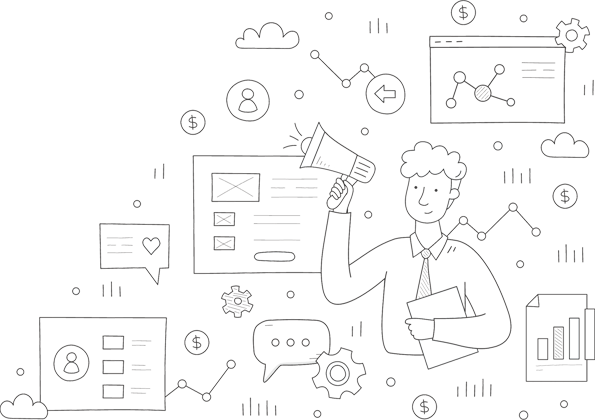It sounds a lot like magic or riddles to most people, but website development is actually a pretty straightforward (but admittedly complex) process. Especially SMB usually don’t invest a lot of money in a good website, even though it could be a game changer for them. A rule of thumb is to update the technical part of your website about every 5 years, so you’re catering to the ever-evolving web requirements and digital audience as good as possible. We’ll just drop some hints to major issues: mobile traffic, responsive websites, new technologies, SEO. Whether your new website will be hand-crafted and developed from scratch or you opt for a simple structure and layout that meet modern website requirements, the whole process of web development is more or less the same. We’ll walk and talk you through.
Briefing Phase
The process of a new website starts with a briefing phase, where both the web developer and the client get a feeling for the project. It’s discussed which features are needed, how the page should be structured and how the website should look and feel like. Once all important information is gathered and the proposal is signed, the web development can begin. Usually, the collection of imagery, existing content or information required to be on the new website also falls into this preparation period. If any content needs to be produced, photographers, videographers and content writers are briefed to kick off the project.
Design Phase
The design phase can vary vastly, depending on how much effort is put into the new website. Small clients will probably be happy with a pre-designed, bought theme for their content management system (CMS) and don’t do any big design adjustments, larger clients often get an individual web design and a custom system. An individual web design starts with the design of wireframes, which give an indication of page structures and features. Once the wireframes are signed off, they go to the web developers, who start building out the custom CMS. In the meantime, the content creators do their magic and prepare the content that will go into the new website.
Web Development Phase
The website development is the technical phase of the project, in which the CMS is set up and customised. The theme is either installed or custom-built. Other issues that the web developer usually takes care of are the hosting, the domain, server and safety issues, such as installing an SSL and a backup service. In case other systems need to be connected to the new website, the complexity of the web development probably increases exponentially. Some systems offer APIs that are easy to connect, while other systems are so complex that an individual connection between the two systems needs to be designed by the web developer. Once the foundation of the system is standing and the web design is deployed, the so-called staging system is ready to be filled with life: content.
Content Phase
A new website without content is only but a pretty, empty shell. All imagery, videos and texts created by the content creators in the previous weeks or months will now be uploaded to the staging system. It’s a hidden or protected environment that allows the step-by-step setup of the system, until every social media link is set, every placeholder has its content and every button has a link. Sometimes during the content phase, smaller adjustments of the page design and structure are made, i.e. the order of menu items can be changed, additional elements can be added if necessary or pictures can be removed if they don’t suit. At the end of the content phase, the client has to review and approve the content.
Testing Phase
The last important web development stage is the testing phase. Here, the whole CMS is tested both technology- and content-wise. Are all elements displayed correctly? Is the website good to navigate? Does the content fit well? Are connections to other systems working smoothly? Is the page looking good on desktop, tablets and mobile phones? In case there is anything not working properly, the web developers amend. If content is missing or not looking good, the content creators can adapt it. Once the whole website is looking great and working perfectly, the client needs to sign it off. It’s time to launch!
Launch Phase
Depending on whether an existing website is replaced or a completely new website is built from scratch for a new domain, the launch phase can range from very simple to very complex. A simple page can be launched relatively quickly by the web developer by switching the CMS from the staging page to the live domain. If a new website replaces an old one, there might be the need of redirecting URLs (that might have changed their structure or wording). API connections to other systems have to be checked thoroughly. Once the whole website is live and working faultlessly, the web development is successfully finished.
Conclusion
The whole website development process contains quite a lot of tasks. While it’s possible to build incredibly cheap and quick websites, we often see that they lack basic functionality and effectiveness. If you make the effort to redesign or set up your website, make sure it actually does what you want it to do: Generate leads for your business. The experienced team of relación is happy to help, just get in touch!





